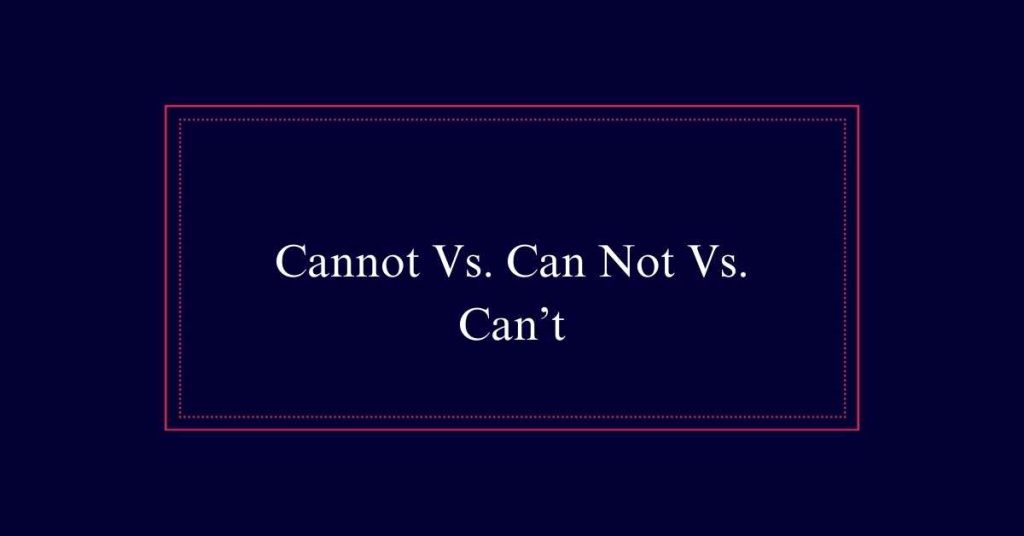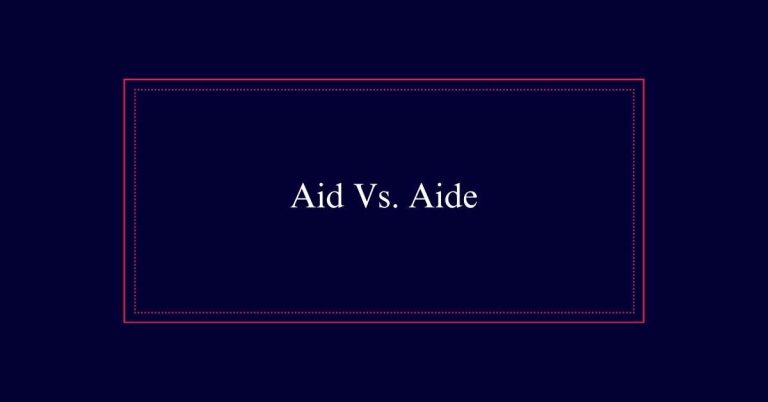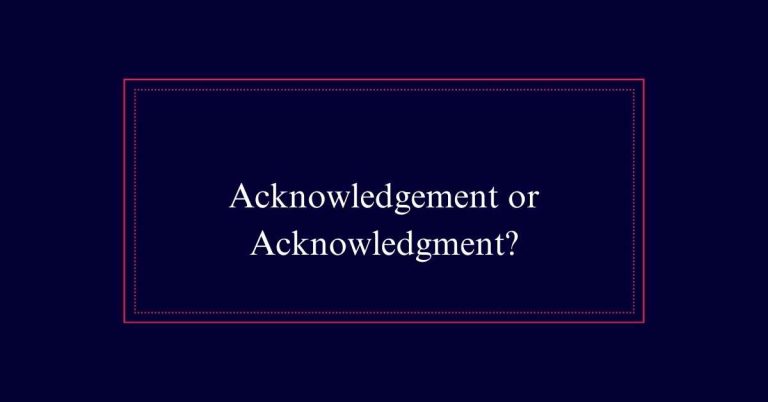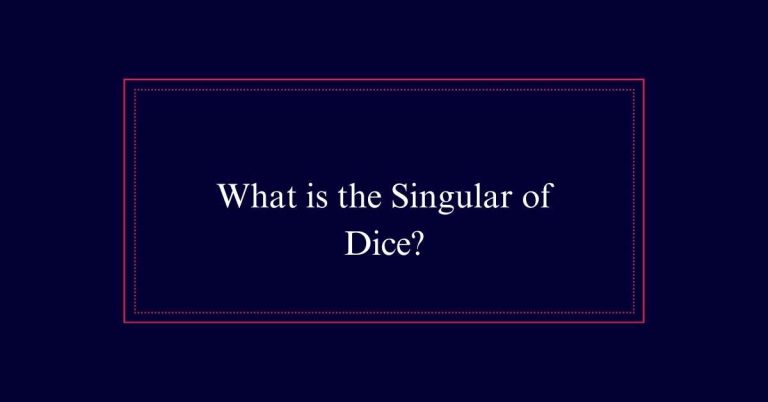Cannot Vs. Can Not Vs. Can’t
‘Cannot’ indicates an inability to do something and is preferred in formal writing due to its professionalism and clarity. ‘Can not’ is less common and used to emphasize the possibility of not doing something, often in specific constructions. ‘Can’t’ is a contraction of ‘cannot,’ commonly used in informal settings such as casual conversations and text messages. It adds a conversational tone but should be avoided in formal contexts like academic papers or professional correspondence.
Defining ‘Cannot’
The term ‘cannot’ is a single word that denotes the inability to do something. It is used to express that an action or event is not possible.
For example, ‘I cannot attend the meeting tomorrow’ indicates an inability to be present. In formal writing, using ‘cannot’ is preferred over its contraction ‘can’t’, which is more suited for informal contexts.
The use of ‘cannot’ adds a level of professionalism and clarity to the text. It is a straightforward way to communicate limitations or impossibilities.
The Role of ‘Can Not’
Therefore, using ‘can not’ correctly can add nuance to your writing, especially in specific constructions like ‘not only . . . but also.’ In such cases, ‘can not’ emphasizes the possibility of not doing something.
For example, ‘You can not only study but also work.’ Here, ‘can not’ separates ‘can’ and ‘not,’ highlighting both actions. This usage is less common and often found in formal or literary contexts. It should not be confused with ‘cannot,’ which means being unable to do something.
Understanding ‘Cant’
Cant, a contraction of ‘cannot,’ is primarily used in informal settings. It is common in everyday conversation, text messages, and casual emails. ‘Cant’ adds a conversational tone and is often easier to read in quick exchanges.
However, it is important to be mindful of the context. In formal writing, such as academic papers, business reports, or professional correspondence, ‘cannot’ is preferred for its clarity and professionalism. Using ‘cant’ in these contexts can appear unprofessional and may reduce the credibility of the text.
Formal Writing Guidelines
Adhering to formal writing guidelines guarantees clarity and professionalism in academic and business communications. In formal contexts, always use ‘cannot’ instead of ‘can’t’ or ‘can not.’ ‘Cannot’ is unambiguous and maintains a professional tone, essential for clear communication.
Avoid contractions like ‘can’t’ as they are more suited for informal writing. While ‘can not’ appears in specific constructions, such as ‘not only… but also,’ it is generally less common and can be confusing. Consistent use of ‘cannot’ helps in maintaining the integrity of formal documents.

Informal Usage Tips
In informal writing, contractions like ‘can’t’ are commonly used to create a conversational tone. They make the text feel more relaxed and friendly. Using ‘can’t’ instead of ‘cannot’ can make your writing sound more approachable and less stiff. This is especially useful in emails, text messages, and casual blog posts.
However, it’s important to know your audience. While ‘can’t’ is perfectly acceptable in informal settings, it might not be suitable for professional or academic contexts. Always consider the purpose and audience of your writing.
Common Mistakes
Despite the relaxed tone that contractions like ‘can’t’ provide, common mistakes often occur when choosing between ‘cannot,’ ‘can not,’ and ‘can’t.’
One frequent error is using ‘can not’ in place of ‘cannot,’ which can confuse the meaning. ‘Cannot’ is a single word that negates ability, fitting formal contexts.
Misusing ‘can’t’ in formal writing is another common mistake. It is crucial to reserve ‘can’t’ for informal communication.
Additionally, some writers incorrectly think ‘can not’ and ‘cannot’ are interchangeable. ‘Can not’ should be used only in specific constructions, like ‘not only . . . but also.’
Specific Constructions
When used in specific constructions, ‘can not’ emphasizes the possibility of a positive choice by separating ‘can’ and ‘not.’ This form is unusual but correct when highlighting alternatives.
For example, in a sentence like ‘You can choose to attend the meeting or you can not attend,’ the phrase ‘can not attend’ is used to present a clear option not to participate. Similarly, in expressions like ‘not only can he sing, but he can also dance,’ ‘can not’ is split to maintain the structure.
While ‘cannot’ is generally preferred for clarity, ‘can not’ has its place in certain contexts where the emphasis on choice or alternatives is necessary.
Grammar and Clarity
Ensuring grammatical accuracy is essential for maintaining clarity in writing. Using ‘cannot,’ ‘can not,’ and ‘can’t’ correctly can influence how your message is understood.
‘Cannot’ is a single word and is the standard choice in formal writing. It leaves no ambiguity.
‘Can not’ is rare and usually appears in specific phrases like ‘not only… but also.’ This creates a nuanced meaning.
‘Can’t’ is a contraction of ‘cannot’ and is suitable for informal contexts. It makes sentences shorter and more conversational.
Spelling Variations
Understanding grammar and clarity lays the foundation for discussing spelling variations in English. The language offers several spelling choices, which can impact the tone and context of your writing. Here are some key points to take into account:
- Cannot: This is the most formal and widely accepted spelling in professional contexts.
- Can’t: A contraction of ‘cannot,’ used in informal writing and speech.
- Can not: Rarely used, this form appears in specific constructions like ‘not only . . . but also.’
- Spelling Consistency: Maintaining consistency improves readability and professionalism.







